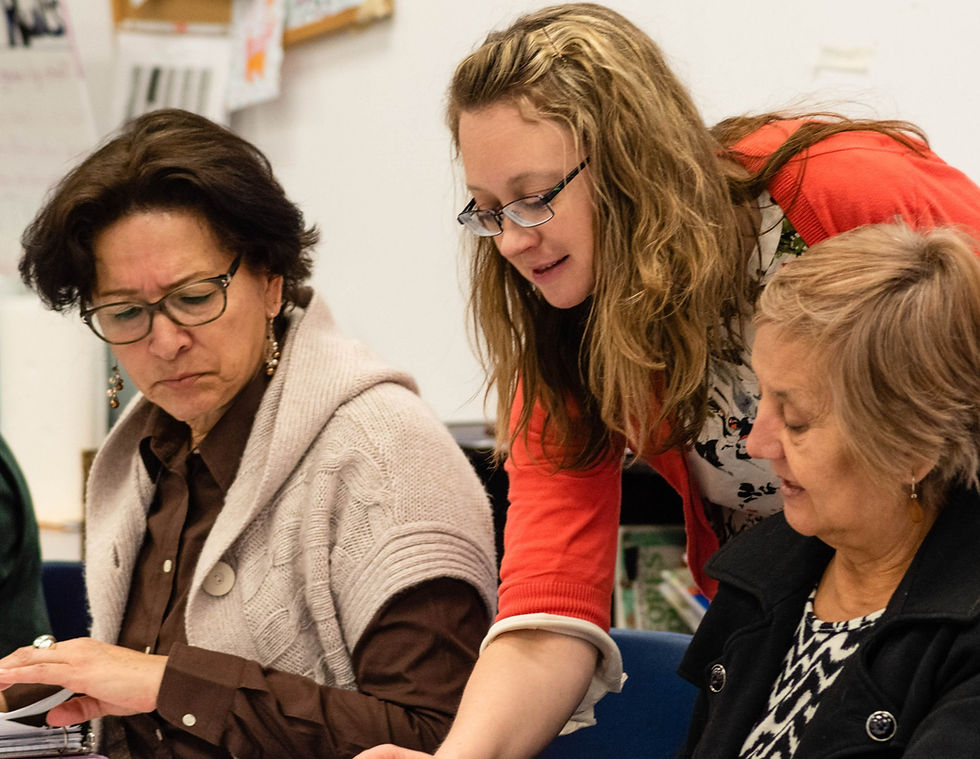Boosting Focus Through Intentional Practice: How Simple Brain Exercises Help Adults Learn Better
- ESLC
- Oct 25, 2024
- 3 min read
Adult learners, especially those who have experienced trauma, often face unique challenges in focusing and regulating their attention in the classroom. Trauma can deeply affect brain function, making it harder for learners to manage distractions, stay calm under pressure, or maintain focus. Brain-based learning—an approach that applies insights from neuroscience to education—offers strategies to support these learners in building cognitive control, improving focus, and fostering self-regulation. Selective and alternating attention tasks, in particular, provide a way to enhance attention and reduce the urge for quick reactions in these learners.
The Impact of Trauma on Learning
Trauma can have lasting effects on the brain, particularly when it comes to learning. Individuals who have experienced trauma may struggle with hyperarousal, where the brain remains in a heightened state of alertness. This can make it difficult for learners to concentrate, manage their emotional responses, or shift focus between tasks. Hyperarousal impacts the prefrontal cortex, the area of the brain responsible for attention control, decision-making, and impulse regulation, which are crucial skills for success in any learning environment.
For these learners, managing stress, controlling reactions, and sustaining focus can become overwhelming. However, attention tasks are specifically designed to support these learners by improving their ability to regulate attention and cognitive responses, leading to better engagement and success in the classroom.
Selective Attention Task: Fostering Focus and Precision
One effective tool for building focus is the selective attention task. In this exercise, students read a story or list of letters and are asked to identify a target word or letter. Every time they encounter the target, they perform an action, such as raising a hand, tapping the table, or writing down a number. This task helps learners improve their ability to focus on a specific stimulus while ignoring distractions.
As students become more proficient, the task can be made more challenging by adding comprehension questions. This requires learners to shift their attention between finding the target word and understanding the overall meaning of the text, helping them practice shifting their focus between specific details and broader concepts. For learners who have experienced trauma, this exercise is particularly valuable as it helps regulate impulsive responses and build voluntary control over attention.
These tasks are especially helpful because learners who have experienced trauma often face difficulties in filtering out distractions and controlling automatic responses. By focusing on a specific task, these learners can strengthen their ability to manage distractions and control their focus more effectively, gradually building the skills needed to succeed in the classroom and beyond.
Alternating Attention Task: Strengthening Flexibility and Control
Another powerful strategy is the alternating attention task, which helps learners practice switching between different stimuli or rules. For example, students may be asked to sort a deck of cards by color or number. After a period of time, the rule changes, and they are required to sort the cards by a different attribute. This forces learners to shift their focus and adapt to new rules on the spot.
Alternating attention tasks are particularly beneficial for learners who have experienced trauma because they encourage cognitive flexibility. Trauma can make it difficult for learners to shift their attention or change mental direction once they’ve started a task. By practicing tasks that require them to switch focus, learners strengthen their ability to adapt to changing circumstances and control where their attention is directed.
This type of task is also an excellent way to help learners manage the cognitive rigidity that sometimes accompanies trauma. With practice, learners can develop the ability to voluntarily shift their attention, improving both their focus and their adaptability in the classroom.
Why Attention Tasks Matter for Learners Who Have Experienced Trauma
For adult learners who have experienced trauma, attention tasks serve a dual purpose. First, they provide an opportunity to retrain the brain, helping learners regain control over their focus and regulate their responses. Second, these tasks help build confidence in learners’ abilities to manage their attention, which in turn fosters a greater sense of control over their learning experience.
By incorporating attention tasks into the classroom, educators can create a trauma-informed environment that promotes not just academic success but emotional and cognitive healing. These tasks offer learners a structured way to improve their focus and develop essential self-regulation skills, allowing them to engage more fully in the learning process. As learners improve their ability to focus, adapt, and control their responses, they are more likely to succeed academically and feel empowered in other areas of life as well.
Conclusion
Brain-based learning strategies that incorporate attention tasks are an effective way to support adult learners who have experienced trauma. Selective and alternating attention tasks, in particular, help learners build the cognitive control needed to manage their focus and reactions in the classroom. By using these strategies, educators can create a supportive, trauma-informed environment that enhances learners' abilities to succeed both academically and personally.


Comments